The Rise of AI-Generated Art and Its Potential for Profit
In recent years, we’ve been witness to an astounding surge in AI-generated art’s creation and appreciation. As machine learning algorithms grow more advanced and sophisticated, they’re now capable of crafting artworks that challenge our conventional ideas of creativity and artistic expression. This emerging form of art has not only captured the attention of artists and enthusiasts but has also ignited discussions about its profit potential in the digital art market.
AI-generated art stands at a fascinating intersection of technology and artistic vision. By harnessing complex algorithms and data analysis, these AI systems can generate unique visual compositions imbued with a distinctive aesthetic appeal. From abstract paintings to intricate sculptures, AI-generated artworks are stretching the boundaries of what was once the sole realm of human imagination.
What sets AI-generated art apart is its capacity for continual learning and adaptation. Machine learning algorithms can analyze vast volumes of existing artwork, identifying patterns, styles, and techniques. This enables them to produce new pieces that incorporate these influences while adding their innovative twists. The result is a fusion of human inspiration and machine precision, giving birth to truly captivating works.
The profit potential in the realm of AI-generated art is on the rise as well. With an increasing number of collectors showing interest in this unique form of expression, a growing market for these digital creations is taking shape. Non-Fungible Tokens (NFTs) have emerged as a means to authenticate ownership and establish value for AI-generated artworks, opening up new avenues for artists to monetize their creations while providing collectors with exclusive digital assets.
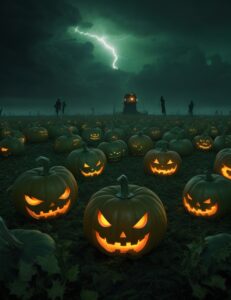
In today’s fast-paced digital landscape, it’s no surprise that platforms dedicated to selling AI solutions are swiftly emerging. These platforms bridge the gap between AI developers and businesses eager to leverage the power of artificial intelligence. In the contemporary business landscape, the range of available options is vast. Companies of all sizes can now harness innovative technologies that were once the domain of larger enterprises. This presents an exciting opportunity for smaller organizations to remain competitive and adopt cutting-edge solutions. This not only opens up new opportunities for businesses but also contributes to the overall advancement and democratization of AI technology. Let’s delve further into how these platforms are shaping the future of AI adoption and innovation.
However, within this excitement lies an ongoing debate about the role of human creativity versus algorithmic generation in the creation process. Some argue that genuine artistic expression can only emanate from human minds, while others embrace the collaborative synergy between humans and machines as an innovative approach to creativity.
In this section, we’ll delve deeper into the world of AI-generated art, exploring its unique characteristics, its impact on the digital art market, and the ongoing discussions surrounding its role in artistic creation.
Understanding the Different Types of AI-Generated Art
Two primary types of AI models dominate the world of art generation: generative adversarial networks (GANs) and diffusion models.
Generative Adversarial Networks (GANs) are a type of machine learning model consisting of two competing neural networks: a generator and a discriminator. The generator crafts new images, while the discriminator attempts to differentiate between real and generated images. Over time, the generator learns to create images that are indistinguishable from real ones.
Diffusion models, on the other hand, start with a random image and gradually add or remove noise until they arrive at a desired image. These models are often employed to create realistic images of human faces and various other objects.
In addition to GANs and diffusion models, several other AI models can be utilized for art generation. For instance, recurrent neural networks (RNNs) can generate text descriptions of images, which can then be employed by a text-to-image generator to create the corresponding image.
The choice of AI model for a particular art generation task depends on its specific requirements. For instance, if the goal is to create realistic images of human faces, then a diffusion model would be a fitting choice. Conversely, if the objective is to produce abstract or artistic images, a GAN might be more appropriate.
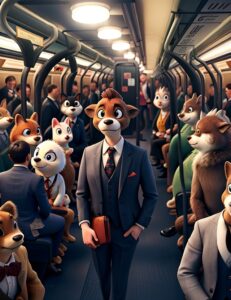
Exploring Different Types of AI-Generated Art for Profitable Ventures
In the ever-evolving realm of art, AI-generated creations have emerged as a captivating avenue for profitable ventures. From digital paintings to abstract compositions, and from photo-realistic images to mixed media collaborations, the possibilities are boundless.
Digital paintings crafted by AI algorithms have garnered attention for their unique aesthetic appeal and technical precision. These artworks often push the boundaries of traditional art forms, offering a fresh perspective that captivates both collectors and enthusiasts alike.
Abstract compositions, birthed by AI systems, offer a glimpse into the realm of imagination and creativity beyond human limitations. These mesmerizing pieces challenge conventional notions of art, inviting viewers to interpret and appreciate them in their unique way.
AI’s ability to generate photo-realistic images has revolutionized the field of visual arts. With remarkable attention to detail and uncanny realism, these creations blur the lines between the real and the artificial. Collectors are increasingly drawn to these captivating pieces that showcase the power of technology in artistic expression.
Furthermore, mixed media collaborations between AI algorithms and human artists have opened up exciting new possibilities for creative exploration. By combining the strengths of both entities, these collaborations yield dynamic and thought-provoking works that push artistic boundaries even further.
As we delve deeper into this realm of AI-generated art, it becomes evident that immense potential for profitable ventures exists. The fusion of technology and creativity offers opportunities not only for artists but also for collectors, investors, and businesses looking to tap into this burgeoning market. It is an exciting time where innovation meets artistic expression, paving the way for new avenues in the world of art entrepreneurship.
Here are some ideas for creating income from AI art:
- Sell prints or digital downloads. Redbubble
- Create AI art commissions for clients.
- License AI art for commercial use.
- Create and sell AI art NFTs.
- Teach AI art classes or workshops.
- Write a blog or book about AI art.
- Create and sell AI art products.
- Partner with businesses to create AI art campaigns.
- Create and sell AI art filters and effects.
- Develop AI art tools and software.
Creating and Selling AI-Generated Art on Online Platforms
The digital era has unfolded endless possibilities for artists, especially with the ascent of AI-generated artwork. As an AI artist, you possess a unique advantage, crafting stunning pieces aided by advanced algorithms and machine learning techniques. However, it’s not just about creating art; it’s also about effectively selling and promoting your creations in the online marketplace.
One of the most effective ways to sell your digital artwork is through online marketplaces tailor-made for AI-generated art. These platforms provide a dedicated space where buyers can discover and purchase your unique creations. With a wide range of potential customers browsing these marketplaces, you have the opportunity to reach a global audience interested in innovative and cutting-edge artwork.
When it comes to pricing strategies for AI artwork, it’s crucial to strike a balance between affordability and value. While your creations may be digitally generated, they still possess artistic merit and should be priced accordingly. Consider factors such as complexity, originality, and demand when setting prices for your pieces.

Promoting your artwork is essential in building a successful online presence as an AI artist. Social media platforms like Instagram, Twitter, and Facebook offer powerful tools for reaching out to potential buyers. Utilize engaging visual content that showcases your
unique style and process behind creating AI-generated art. Collaborate with influencers or participate in relevant hashtag challenges to increase visibility among art enthusiasts.
Building an online presence goes beyond social media marketing techniques alone. Creating a professional website or portfolio where potential buyers can explore your collection is crucial. Showcase high-quality images of your work along with detailed descriptions that highlight the intricacies of each piece. Don’t forget to include contact information or links to purchase directly from your website.
In addition to online marketplaces and social media platforms, consider exploring other avenues such as virtual galleries or collaborating with established artists in exhibitions or events related to AI-generated art. These opportunities can provide valuable exposure while connecting you with like-minded individuals within the artistic community.
Building Your Reputation as an AI Artist: Monetizing AI-Generated Art
The art world is undergoing a digital transformation with the rise of Non-Fungible Tokens (NFTs) and the tokenization of AI artwork. This groundbreaking technology allows artists to create and sell limited-edition digital assets, giving buyers a unique ownership experience like never before. To capitalize on this trend, online platforms have emerged as powerful tools for artists to showcase and sell their artwork to a global audience.
In this landscape, social media marketing techniques play a crucial role in driving awareness and engagement for artists’ creations. Platforms like Instagram, Facebook, and Twitter provide an ideal space for artists to connect with their target audience, build a loyal following, and promote their NFTs or tokenized artwork.
Furthermore, forming affiliate partnerships with relevant brands can be mutually beneficial for both parties involved. Collaborating with brands that align with an artist’s aesthetic or message can amplify exposure and reach new audiences. By leveraging these partnerships, artists can tap into established networks while brands benefit from the association with unique digital creations.
With NFTs revolutionizing how art is bought and sold digitally, it’s time for artists to embrace these innovative technologies and explore the vast opportunities they bring. By utilizing online platforms effectively, implementing social media marketing strategies, and forging lucrative brand partnerships through affiliate programmes, artists can unlock new avenues for success in the ever-evolving world of digital art.
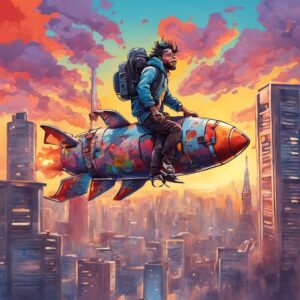
Copyright Issues with AI-Generated Art and Intellectual Property Rights
The rise of AI-generated art has sparked a complex discussion surrounding copyright issues and intellectual property rights. As artificial intelligence becomes more advanced, it is capable of creating original artwork that challenges the distinction between human and machine creativity. However, this progress has also raised questions regarding ownership, fair use policies, and the protection of artists’ rights.
One of the primary concerns revolves around determining who owns the copyright to AI-generated art. Traditionally, copyright law assigns ownership to the human creator of a work. However, with AI-generated art, where there may not be direct human input or authorship, establishing clear ownership becomes challenging. This ambiguity can lead to legal disputes and complicate the recognition and protection of an artist’s intellectual property rights.
Another aspect that requires careful consideration is the concept of fair use policies. Fair use allows limited use of copyrighted material without permission from the original creator under certain circumstances such as criticism, commentary, or educational purposes. However, when it comes to AI-generated art, determining what constitutes fair use can be tricky since these creations are often based on existing works or data sets.
To address these challenges effectively, lawmakers and governing bodies must adapt copyright laws and regulations to encompass AI-generated content specifically. This would involve establishing guidelines for determining ownership rights in cases where artificial intelligence plays a significant role in creation.
Furthermore, collaboration between artists and technology developers could help shape fair use policies that strike a balance between protecting creators’ rights and encouraging innovation through AI-assisted artistic endeavors.
Conclusion: Embrace the Potential of AI-Generated Art to Turn Your Creativity into Profit
In conclusion, the potential of AI-generated art is vast and should not be overlooked. By embracing this technology, artists and creators can harness its power to turn their creativity into profit.
AI-generated art offers a unique blend of human imagination and machine intelligence. It allows artists to explore new possibilities, experiment with different styles, and push the boundaries of traditional art forms. With AI as a tool in their arsenal, artists can expand their creative horizons and reach new audiences.
While there may be concerns about the role of AI in creative processes, it is important to remember that these technologies are tools that enhance rather than replace human creativity. Artists will always play a crucial role in shaping the artistic landscape and imbuing works with emotion and meaning.
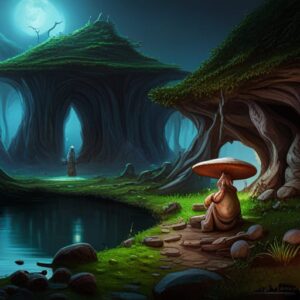
Embracing the potential of AI-generated art allows artists to tap into new revenue streams while pushing artistic boundaries. By combining human creativity with machine intelligence, artists can unlock new levels of innovation and profitability in their artistic endeavors. So why not embrace this exciting future and turn your creativity into profit?
Having personally explored the realm of AI art, I can confidently say that my creative endeavors have yielded impressive results. With this firsthand experience, I am eager to put into practice the ideas we have discussed and embark on a captivating journey of experimentation. As I explored the possibilities, I have discovered many different ways to express and monetize your content creation; there may be things you have not thought of. I was certainly inspired as I was surfing, and I will share as much as I can. By delving into various approaches, I aim to uncover what truly resonates and ignites inspiration, while also identifying aspects that may require refinement. Rest assured that every insightful discovery and valuable lesson learned along the way will be shared with you, enabling us to collectively grow and harness the full potential of AI art.
How is AI-generated art being monetized in the digital art market?
AI-generated art is being monetized through various avenues, such as the sale of digital prints, commissions, licensing for commercial use, and the creation and sale of Non-Fungible Tokens (NFTs). These methods provide artists with new ways to monetize their creations, offering collectors exclusive digital assets and authenticating ownership and value in the digital art market.
What are the primary types of AI models used in art generation?
The two main types of AI models used in art generation are Generative Adversarial Networks (GANs) and diffusion models. GANs consist of two neural networks, a generator and a discriminator, that work together to create images. Diffusion models start with a random image and add or remove noise to arrive at the desired image. These models are selected based on the specific requirements of the art generation task.
Are there any copyright issues or intellectual property rights concerns with AI-generated art?
Yes, AI-generated art raises complex questions about copyright and intellectual property rights. The main concern is determining the copyright owner, especially when there's no direct human input. Additionally, defining fair use policies for AI-generated art can be challenging. Addressing these issues requires adapting copyright laws and guidelines for AI-generated content.
Can AI-generated art be considered a legitimate form of artistic expression?
While there is debate over the role of AI in the creative process, many consider AI-generated art a legitimate form of artistic expression. AI is seen as a tool that enhances human creativity, allowing artists to explore new styles and possibilities. The combination of human creativity and machine intelligence in AI-generated art is increasingly recognized and appreciated in the art world.
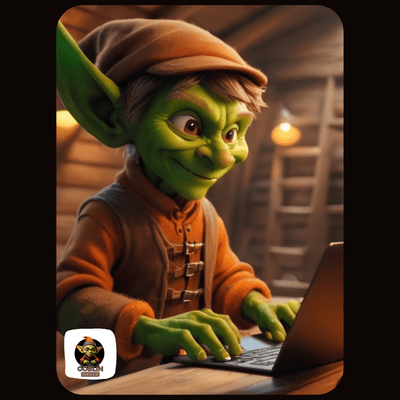
Comments